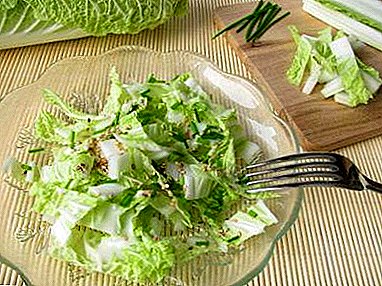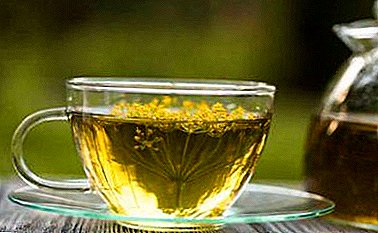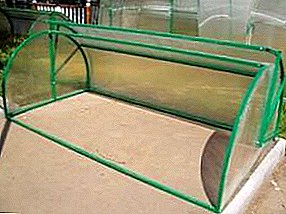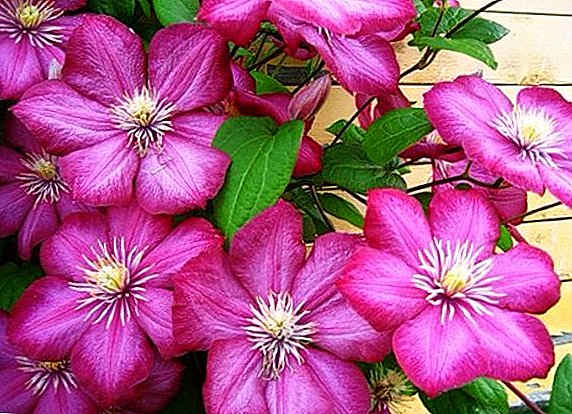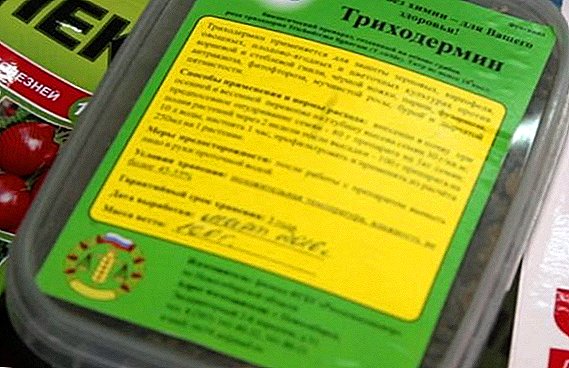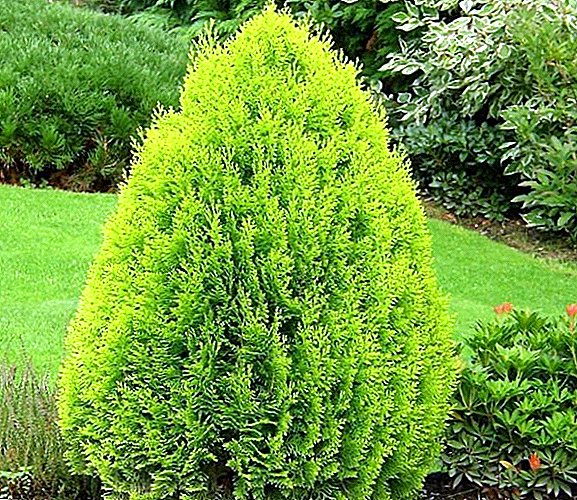 The evergreen thuja, beloved by many gardeners, is often used in landscape design, or simply as a hedge, protecting it from the winds and the scorching sun. Most fans of this plant believe that the work on the landing of thuja should be carried out in the spring. But if for some reason this event has to be postponed until autumn, then without observing some important rules a healthy plant cannot be obtained.
The evergreen thuja, beloved by many gardeners, is often used in landscape design, or simply as a hedge, protecting it from the winds and the scorching sun. Most fans of this plant believe that the work on the landing of thuja should be carried out in the spring. But if for some reason this event has to be postponed until autumn, then without observing some important rules a healthy plant cannot be obtained.
What is better to plant: seeds or seedling
A plant that is planted too late in the fall is likely to die. The maximum period to which you can land thuja is mid-October.
Choosing an autumn planting, you should give preference to planting seeds. They tolerate a cold winter easier and give early shoots in the spring. In addition, young plants require a minimum of care.
If a sapling is planted in the fall, then its root should be well insulated with leaves or compost. You must also ensure that heavy snow does not damage the tree.
You will probably be interested to read about what healing properties the thuja has.

Location selection
Thuja is not picky. But, choosing a place for its landing, you should consider some points:
- The tree should be protected from dry and cold winter winds.
- Thuja does not tolerate excess moisture. Therefore, in areas where groundwater is too close to the surface, the tree may die.
- Place for landing a thuja should not be under the scorching sun. Optimally, if a tree grows where bright sunlight alternates with shadow. This will help avoid conifer dehydration.
Did you know? Many people know thuja as a low tree or shrub, but in China and Japan, where it comes from, thuja can reach thirty meters high.

Garden varieties
In our climatic conditions, only one species of thuj - western thuja grows. In total, this plant has 6 species, but the western thuja is the most popular.
These evergreen conifers are indispensable in landscape compositions. They do not lose their decoration all year round and do not require special care.
Among a large number of varieties the most popular are:
- "Emerald";

- "Brabant";
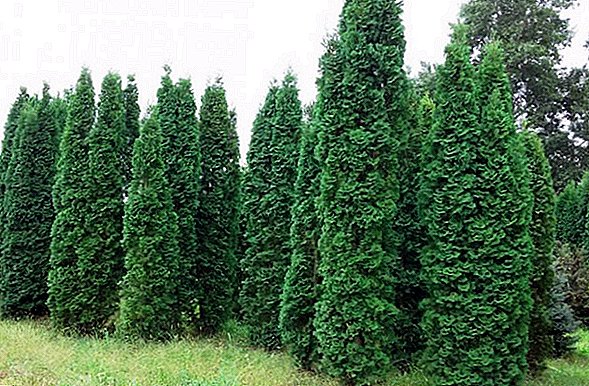
- "Stolvik";
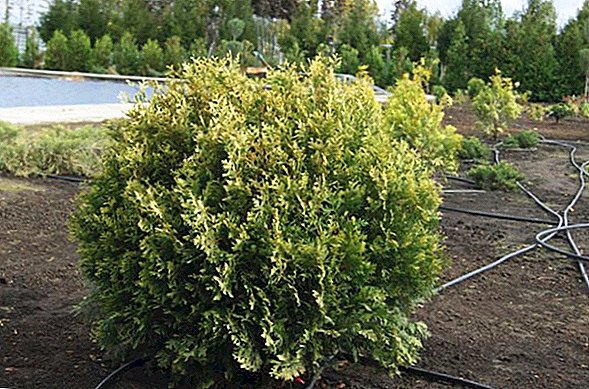
- Columna;

- "Holmstrup";

- Wagnery.

Landing technology
Proper planting of the thuja in the fall ensures that in the future the tree will need minimal care, will not get sick and will certainly endure winter frosts.
We advise you to read about how to propagate thuya cuttings in the fall and spring, as well as how to grow an evergreen shrub from seeds.
Selection of seedlings A plant that is healthy and adapted to the local climate is only available in a specialized nursery. To buy seedlings in natural markets is not recommended. The branches of a healthy tree must be elastic, free from stains and signs of disease. The needles of a good seedling is not frayed. 
Pit preparation The diameter of the pit usually does not exceed one meter, it completely depends on the size of the rhizome of the tree. At the bottom of the pit, add peat or sand, nutritious turf mixture or leaf soil.
Drainage Planting thuja in heavy ground or in a place where the groundwater is very close, should provide special drainage. It can be medium-sized stones, small pieces of brick or expanded clay, laid at the bottom of the pit.
Planting seedlings The shrub is carefully immersed in the middle of the hole, ensuring that the root collar is at the same level with the ground, and taking care not to damage the earth ball on the rhizome.
Substrate The hole is filled with a mixture of equal parts of the soil, peat and sand. After that, everything is well tamped and watered abundantly.
Video: landing thuja
Important! The root system of this tree is superficial, so you must either provide the plant with mulch, or take care of regular loosening and weeding.
Care
Despite its unpretentiousness, thuja still needs care - minimal, but regular. If it is absent, the tree becomes unappealing and dull, a large number of cones form on it.
Watering
During the month after landing, the thuja needs weekly watering (1 liter of water per 20 cm of height). Also, her sprinkling will have a positive effect on her height. This is vital for a tree whose crown evaporates a large amount of moisture. In the hot season, thuja should be watered at least twice a week. 
Top dressing
In the autumn, the plant will provide the plant with the necessary material for a successful wintering of strength. For these purposes, wood ash or compost can be used. This will have a favorable effect on the soil around the tree and in the future will provide the coniferous tree with a strong immunity.
Also for feeding thuja are used:
- Complex fertilizers for conifers.
- Organic fertilizers (slurry, compost) and various green manure.
- Potash fertilizers (potash salts, sylvinite). This type of fertilizer avoids the needles yellowness, which leads to a lack of calcium in the soil. Potash fertilizers provoke an intensive growth of thuja, so they should not be applied in the fall. They are suitable as a top dressing for weak and stunted seedlings.
- Nitrogen fertilizers - they provoke increased growth of the tree, so they can not be used before the autumn planting in the ground. This is a good option for winter dressing of thujas growing in pots or containers.
Pruning
Decorative cutting of a thuja can be carried out in the early spring or at the end of summer. This event involves the removal of no more than the third part of the shoots. All dry, diseased and damaged branches are removed in the spring during sanitary pruning.
Did you know? Canadians use fresh branches of thuja as fragrant whisks.
The most important thing when cutting a thuja is regularity. The shape of the crown must be adjusted little by little, but constantly. Do not do this work in the rain or in wet weather. This will result in open wounds on the tree that will not heal for a long time. 
Preparing for winter and wintering
Before the onset of cold weather, the crown of an adult tree should be tied with twine. This will protect it from the destructive effects of wind and heavy snow. Young thujas protect from winter frosts by wrapping them with special materials: spruce branches, kraft paper, or one of the modern covering materials, such as Lutrasil or Agroterm.
We recommend reading about whether you need to cover the thuja for the winter, as well as how to deal with dangerous pests and diseases of the Tui.Protection from the winter cold is required and the roots. To do this, under the crown is placed a special pillow of leaves, mature manure or compost. This will prevent freezing of the soil and the possible death of the root.
Diseases and pests
Although thuja is almost not susceptible to illness, improper care and excessive watering can lead to the development of various diseases in it.
Phytophthora 
- Symptoms: the fungus infects the roots. The plant fades and turns gray, the root emits a putrid odor and becomes soft and brittle.
- Treatment: regular watering with fungicides for prophylaxis. If the tree is already sick, it is better to destroy it and completely replace the earth.
Brown shoots 
- Symptoms: this fungal disease appears in early spring and appears yellowed scales.
- Treatment: constant feeding and limestone roots. From July to October, the crown can be sprayed with a 2% solution of "Fundazol". Rapid removal of affected shoots prevents the spread of the disease.
Familiarize yourself with the nuances of growing coniferous plants such as juniper, pseudo-tosuga, yew, cross-pair microbiota, cypress, fir, boxwood, larch, pine, cedar and myricaria foxtail.
Thuye pseudo shield
- Symptoms: the onset of the disease is evidenced by the appearance of yellow spots on the cortex, which, if untreated, can cover the entire trunk.
- Treatment: for the treatment used drugs "Rogor", "Antio", "Karbofos". In addition, noticing the first caterpillars on the trunk, you can gently try them, so as not to damage the bark, clean off with a knife.

Shyutte and rust
- Symptoms: a disease affecting mostly young trees. It begins in the spring and develops throughout the year. It is shown by darkening and falling off of needles.
- Treatment: You can stop the disease if you cut and burn all the affected branches. Also, the tree can be treated with a solution of the drug "HOM" (40 g per 10 liters of water). Spraying is carried out as a preventive measure twice a season (in spring and summer). Effective in the fight against shyutta and rust and the solution of the drug "Topsin-M" (15 g per 10 liters of water). Processing is carried out in the spring, as soon as the threat of night frost has passed.
 Also, for treating trees, you can use the Bordeaux mixture familiar to many.
Also, for treating trees, you can use the Bordeaux mixture familiar to many.Important! After disembarking the thuja in autumn, it may turn yellow and begin to drop the needles. Do not be afraid, this phenomenon is characteristic of a tree planted in the fall.
Among the pests the greatest danger to these green spaces are:
- Tuevaya aphid. These small insects resemble wax dust. Their appearance is evidenced by the rapid fall of the needles. Treatment with pests will help the treatment with an insecticide, for example, "Fufanon" (10 ml per 10 liters of water), which is carried out from May to June.

- Spider mite This type of pest attacks trees growing on dry soils, entangling them with cobwebs. Spraying infusion of dandelion, garlic or colloidal sulfur will help fight it. Also, the tree can simply be treated with cold water, it will scare off the tick.
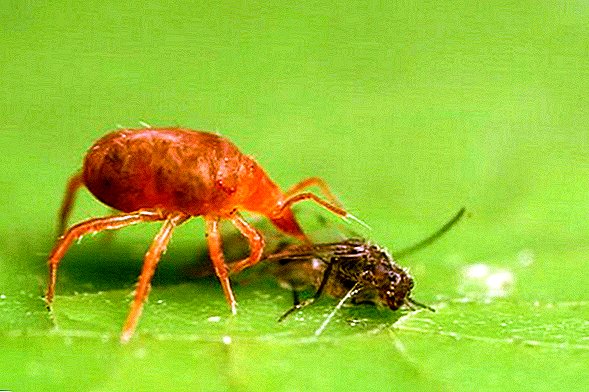
- Bark beetle These bugs are able to destroy the tree for a month. They lay eggs in the bark from which the larvae hatch. Effective means of combating this pest, unfortunately, does not exist. Therefore, it is rational to focus efforts on preventive measures: treatment by the Clipper, growth regulator by Zircon or any other growth regulator for conifers.

Thus, the landing of the thuja in the fall is not particularly difficult. With the observance of some simple rules and systematic care, the probability that a tree does not take root is minimal. Take care of it, and it will long please you with its beautiful and healthy look.
Reviews from the network













